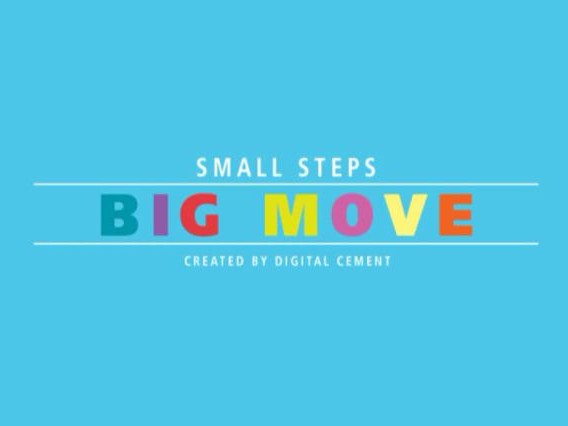Ten years ago
Ten years ago, a lot of interface designers were using Flash to build websites because it allowed us to fully control the presentation of content. This was a powerful benefit at a time when it was a struggle to ensure consistency, across browsers, of even simple html formatting.
At about this same time, John Allsopp wrote the seminal A List Apart article entitled “A Dao of Web Design”. In it, he argues that interface designers should “make pages which are adaptable. Make pages which are accessible, regardless of the browser, platform or screen”. He wrote, “It is the nature of the Web to be flexible, and it should be our role as designers and developers to embrace this flexibility”.
At a time when Flash designers were trying to control the presentation of content, Allsopp was advocating separation of form and content.
As the World Wide Web continues to evolve, grow up and grow into itself, we are learning to better understand its true nature. As Allsopp identified, it is the adaptability of form that is one of the defining characteristics of the Web. It is this quality of flexibility that will continue to shape the growth of the Web over the next ten years.
It is the nature of the Web to be flexible, and it should be our role as designers and developers to embrace this flexibility.
John Allsopp
Responsive Design
Designers now realize that the interfaces they create must be readable on an increasing variety of devices. The presentation of an interface must be able to adapt to an ever-increasing number of screen sizes. Rigidity no longer makes sense when content is required to fit containers that vary in shape and size.
One in four American teenagers surf the Internet on gaming consoles. Smart phones are the most popular method of getting online in the world. Internet access is now being incorporated into devices ranging from refrigerators to cars. Designing a static state interface with the expectation that it will be viewed on a 1280×800 screen is naive.
Over the next ten years, the Web will be incorporated into an increasing variety of tools, and it will be crucial that the interfaces we design are able to adapt in shape, size and form to fit and fill these new tools.
In order to make this happen, interface designers must be able to visualize the separation of form and content. We must think of the interface as something fluid in form, held together by strong information design.
Just as a “mobile first” approach to interface design forces us to focus on the most important content first, it is increasingly important that designers focus on strong information design with “content first”.
Separating Form and Content
Currently, APIs like Readability and Instapaper reformat the semantic mark-up of html content. In ten years, I think that services like this will be more common. I think that there will be a continued growth in services like pulse.me that enable the aggregation of content. Users will pull content into spaces of their own curation.
This personal aggregation, pull method of experiencing the Web will allow individuals to format content as they choose. I think that this may lead to an increased level of design literacy among non-professional designers … as well as a lot of bad design.
In this pull scenario, the ad-supported Web content model no longer works. If content can be separated from an interface, ads can be stripped away from content, and content providers that survive on advertising dollars will need to find other sources of revenue. Content providers, such as newspapers and magazines, may increasingly begin charging for content.
We may become more accustomed to paying for small pieces of content. Think of paying ten or twenty-five cents for an article, just as you now pay one dollar for a song on iTunes.
There will need to be new ways to pay – online equivalents to debit cards and cash that people without credit cards can use. Certainly, as the online transactional economy grows, online identity as well as the value of privacy will only become more important. To this end, Open ID, or some other standardized system of online identification, may finally be realized.
In ten years, the convergence of TV and the Internet, which has remained one of the other holy grails of the information age, will probably also have been realized.
Jeffrey Zeldman discusses differences in reading postures. He notes that while using a desktop computer, we “lean in” to the content, whereas the iPad and interfaces that have large type allow us to “sit back” and experience content. He suggests that we are more relaxed when “sitting back”.
TV is a medium that we are familiar sitting back to experience. In ten years, when we are more commonly surfing the Web on TV screens, we will probably see more use of a design aesthetic that includes large type that we can sit back and read. We will probably see a lot of websites that are almost like PowerPoint presentations, with chunks of content set in big type.
A Multiplicity of Devices
As an increasing number of device types are connected to the World Wide Web, interface designers may more commonly find themselves in situations where they need to consider hardware design in conjunction with software and information design.
Within the next ten years, mobile and location-based services will become ever more important. Information, when delivered in search results and services, will more commonly be contextual to neighborhoods and location.
As location-based intelligence gets smarter, we will experience information through new kinds of touch points.
By using mobile devices as lenses, we will see spaces and places that have been enhanced with data from the Web. In theory, augmented reality can turn anything and anywhere into an information space.
Consider the recent hybrid magazine/iPad advertisement that was created for Lexus. In ten years, we will more commonly see similar examples of analogue and digital worlds working in tandem. As the role of the World Wide Web becomes more prominent in the world, we will more often think of it as being a part of the world, as opposed to “that thing you access on a screen”.
Think of the viral video that shows a five year old making touch gestures on the pages of a magazine, or the feeling you get when you make a mistake, like spilling water for example, and try to push “CONTROL-Z”. The World Wide Web will increasingly become a part of our experience of the world.
Putting the ‘World’ in World Wide Web
The Web will not just become more ubiquitous within our own lives, but participation in it will also grow around the world in new populations.
People will be reading and writing to the Web in a greater multiplicity of languages, and translation tools will be smarter. We will more commonly consume information and services written in native languages that we don’t understand.
In ten years, speech readers and speech-enabled interfaces will be more common. Siri may actually be useful. Touch screens and gesture-driven interfaces will also be used more often. The mouse will probably seem almost like a relic of the past.
As the Web grows in size and prominence, Web standards, good design and our role as UX designers will become more important.
There will be more content, and as designers, we will need to put content first. Empathetic thinking will be critical as we design interfaces around the information that we think is most valuable to an audience.
Data are the new pixels - the cell units of ecosystem design. Algorithms are the new rules of style and composition.
Cindy Chastain
Ecosystems of Data
Cindy Chastain writes, “Data are the new pixels – the cell units of ecosystem design. Algorithms are the new rules of style and composition.” Certainly, as the World Wide Web continues to grow, there will be more data.
With an understanding that the form of things must be fluid, comes the idea that data will be the glue that holds it all together. Understanding how to use data (be it peer suggestions, geolocation, or personal usage patterns and history), and what to do with it to make a user experience richer will be an essential UX skill.
Experiences on the Web will be made richer in ten years through better use of data. As data is pulled from different sources and is used to pull websites and Web services together in new ways, we will think less about “designing a website” and more about designing “Web ecosystems”. It will be more critical to the job of an experience designer to think about how a range of customer touch points fit together. Mapping the customer journey will be critical.
In ten years, interface designers will be accustomed to thinking about designing systems, of which the website interface is just one component.
Good design won’t be about controlling things, but about creating systems that can adapt. It is not, and will not be the job of designers to control form, but to control content.
Designers aren’t pixel mechanics. Data are the new pixels.




